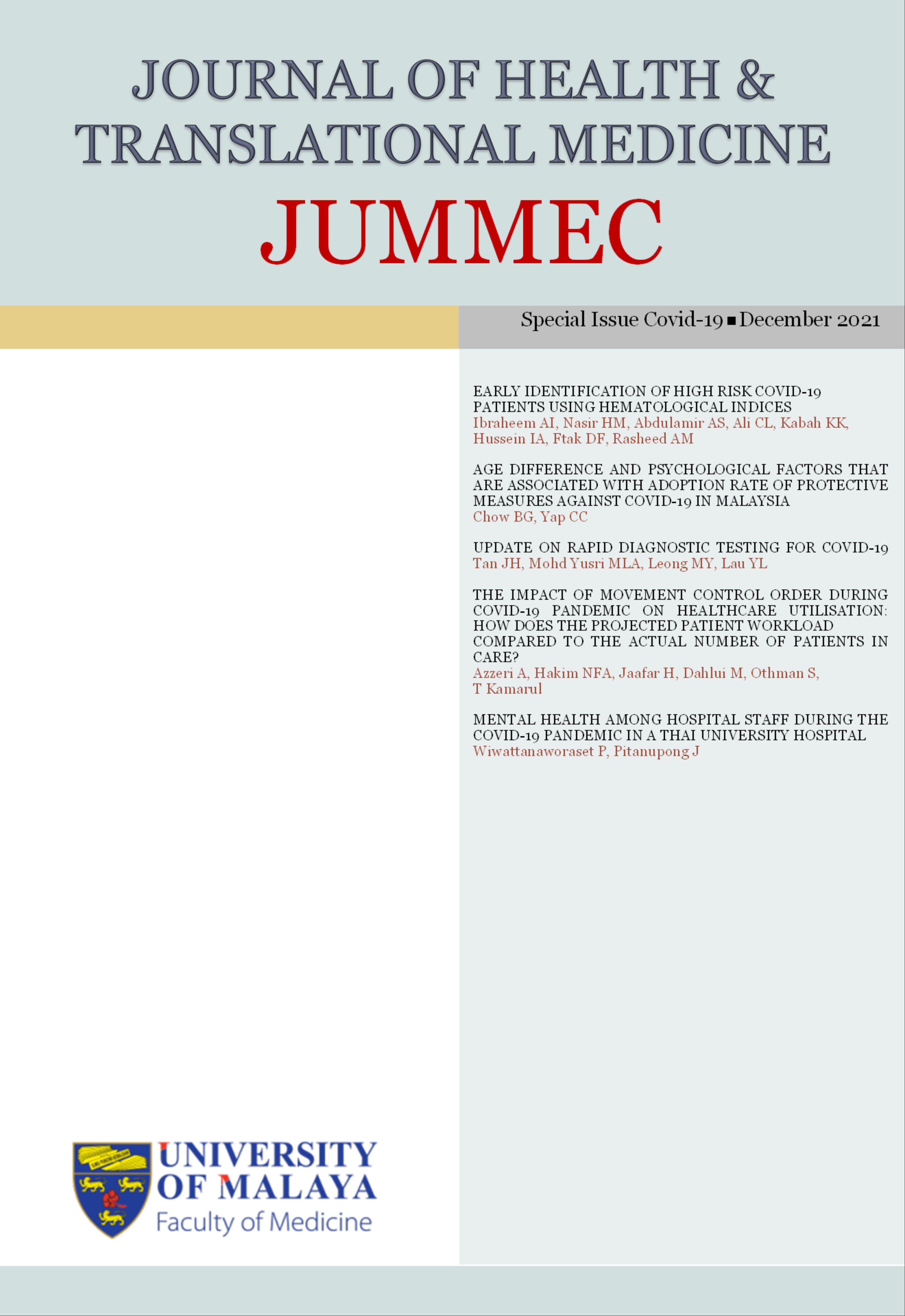THE IMPACT OF MOVEMENT CONTROL ORDER DURING COVID-19 PANDEMIC ON HEALTHCARE UTILISATION: HOW DOES THE PROJECTED PATIENT WORKLOAD COMPARED TO THE ACTUAL NUMBER OF PATIENTS IN CARE?
Received 2021-04-27; Accepted 2021-11-18; Published 2021-12-11
DOI:
https://doi.org/10.22452/jummec.sp2021no1.4Abstract
The rising healthcare demand during COVID-19 outbreak may endanger patients and forces hospital to plan for future needs. Predictive analyses were conducted to monitor hospital resources at one of the gazetted COVID-19 hospitals in Malaysia. Simultaneously, a real-time observation on patient’s volume was conducted to understand the actual trend of healthcare resource utilisations. All the projections were directly compared to the actual number of patients in-care. This predictive study was done at University Malaya Medical Centre (UMMC) using various sources of data. The projections revealed a steady increase in the number of cumulative cases until April 2020 followed by an exponential increase in the number of cumulative positive cases in Malaysia. When a comparison between the projection and actual data was done, it was found that the initial projections estimated a range that is 50% to 70% higher during the first three phases of Movement Control Order (MCO) compared to the actual number of COVID-19 patients at UMMC. Subsequent projections were done by using recent estimations from the national database and it was estimated that the number of patients treated will be less than 10 each day up until the end of May 2020. The accuracy of this estimation is 95% when compared to the actual number of COVID-19 patients in care. In conclusion, the practice of continuous projections and real-time observation through predictive analysis using mathematical calculations and algorithms is one of the useful tools to facilitate hospital management to allocate adequate resource allocations.
Downloads
Downloads
Published
Issue
Section
License
All authors agree that the article, if editorially accepted for publication, shall be licensed under the Creative Commons Attribution License 4.0 to allow others to freely access, copy and use research provided the author is correctly attributed, unless otherwise stated. All articles are available online without charge or other barriers to access. However, anyone wishing to reproduce large quantities of an article (250+) should inform the publisher. Any opinion expressed in the articles are those of the authors and do not reflect that of the University of Malaya, 50603 Kuala Lumpur, Malaysia.


